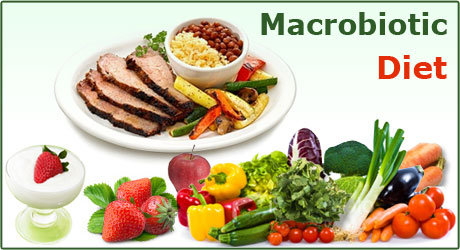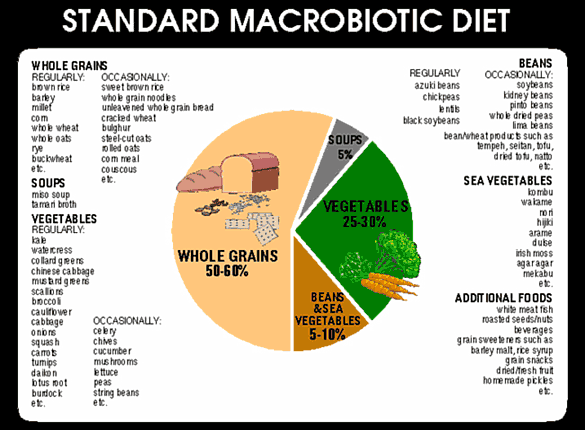
We love looking at the origins of words here, and the word macrobiotic comes from a combination of the Greek word macro, which means large or long, as opposed to micro. It also uses the word bio, which means life. So the clue is in the title of a macrobiotic diet: its idea is to prolong a healthy life.
Developed in Japan in the 1920s by a philosopher called George Ohsawa, the macrobiotic diet saw a recent resurgence. Principally, the point is to eat foods that avoid toxins. Ohsawa believed that if we opt for eating a simple, healthy diet; we will live more harmoniously in nature. It was also his belief that following this diet would help prevent and even cure such illnesses as cancer.
Contents
A lifestyle
Primarily, a macrobiotic diet is more than just what you eat. It is a whole lifestyle choice. Following a macrobiotic diet properly involves being quite strict about what you eat, how you cook your food and including other principles that focus on wellness in general.
Throughout most of our articles about healthy eating, we here incorporate many of the principles of a macrobiotic diet. However, there are trained practitioners who help you to plan your diet, taking into consideration a number of factors, such as your age, sex, where you live and how much exercise you do.
What do you eat on a macrobiotic diet?
At all costs, the food should be locally sourced, where possible and it’s important to choose natural, organic foods that have been untreated. These foods and the portion of the diet they comprise are detailed below.
About half of the diet
.. is made up of eating whole grains, like brown rice, buckwheat, oats and barley.
About a quarter
…comes from locally grown, organic fruits and vegetables. Local fruit may include apples, pears, peaches, plums, apricots, grapes, melons, and berries. Tropical fruit such as bananas, mango, pineapple, and papaya usually have travelled too many food miles and are not considered part of the diet.
The final quarter
… is made of consuming nutritious soups made with vegetables; seaweeds and other sea vegetables; pulses such as chick peas and lentils; and fermented soy in the form of miso
On occasion, people who follow a macrobiotic diet can also include small helpings of nuts and seeds for the protein and pickled vegetables, which are fermented foods. Some people following a macrobiotic diet eat small amounts of organic meat or fish occasionally too.
What about additives?
Naturally, this means all processed foods, or foods with artificial colours, flavours or preservatives are banned from the diet. Cooking oils should be unrefined, virgin oil. Rather than just opting for olive oile, dark sesame oil is permitted on the macrobiotic diet. Other oils that are recommended are light sesame oil, corn oil, avocado oil, hemp oil and mustard seed oil.
Permitted condiments and seasonings include natural sea salt, soy brown rice vinegar, umeboshi (sour plum) vinegar, umeboshi plums, grated ginger root, seaweed and sesame seeds.
Where do I get my Protein?
Small amounts of fish or seafood can typically consumed several times in a week. However, meat, poultry, eggs, and dairy are more commonly avoided on the macrobiotic diet. Fish and seafood are eaten with Japanese favourites such as horseradish, wasabi, ginger, mustard, or grated daikon radish in order to help the body detoxify from the effects of fish and seafood. Seeds and nuts, which are also protein foods can be consumed in moderation. These are permitted to be lightly roasted and salted with sea salt or soy sauce.

How do you eat it?
This is what really sets the macrobiotic apart from other diets. Unlike other diets, which sometime advocate the little and often eating rule, you should only eat when you are hungry on a macrobiotic diet. The diet is followed by many cancer patients and for different reasons, sometimes your body is just not willing to take on food.
Chewing
Food should be chewed for a long time to make it become liquid in your mouth. This essentially helps with digestion. There are enzymes present within saliva that help to break food down, and macrobiotic practitioners believe that effective chewing puts less strain on your digestive system.
Ditch the supplements
Macrobiotic guidelines are about ensuring that your body gets all the nutrients it needs from food sources. Therefore, it’s advised that you don’t take vitamin or mineral supplements.
Drinking
As with eating, you should only drink when you are thirsty. Primarily, drinks should consist of water or natural, unflavoured teas without caffeine. All water you drink or cook with should be purified to ensure a pH balance.
Food is also stored, prepared and cooked in a certain way. This includes:
- Cooking and storing food in pots and utensils made of wood, glass, stainless steel or ceramics and avoiding plastic
- Cooking with gas or natural fire. No microwaves and preferably not an electric cooker
- Preparing food in a calm and peaceful environment, to avoid stress
Other elements
Because it’s a whole lifestyle choice, there are several other elements to a macrobiotic lifestyle that people often consider. Practitioners are able to give advice about:
- Beneficial exercise
- Counselling
- Home remedies that aim to heal your body
- Meditation
- Cooking and food preparation
What are the benefits?
Those who have followed macrobiotic diets for many years have lower fat and cholesterol levels, which reduce their risk of getting
- Heart disease
- High blood pressure
- Diabetes
- Breast cancer
- Other cancers linked to a high fat diet
Can a macrobiotic diet fight cancer?
The cancer treating element of a macrobiotic diet does not have strong evidence to prove its validity. However, the lack of sugar to feed the cancer and the attention to what you eat is always going to be beneficial.
Many people choose a macrobiotic lifestyle because they want to fight cancer as part of an overall complementary therapy system. Since there is little scientific evidence to prove that a macrobiotic diet can treat or cure cancer or any other disease, we advocate the diet purely as a supplement to a healthy lifestyle and urge anyone considering it to get advice from a doctor.
What are the dangers of a macrobiotic diet?
Any highly restrictive diet like the macrobiotic diet, or vegan diet need to be carefully planned to avoid malnutrition. This diet does not contain much protein, unless you work hard to ensure you are consuming fish and seafood, which is prepared in certain ways.
Those who have cancer may already be weak and underweight, due to the illness, and at this time it’s important to ensure you are getting a fulfilling calorie intake in order to remain strong during the disease and treatment. Limiting the diet can have harmful effects on your health, particularly in cases where it is followed instead of conventional medical treatments.
- Calories
- Vitamins
- Calcium
- Protein
- Iron
Are all essential to marinating a strong and healthy body, and certain versions of the macrobiotic diet people consumed little more than organic grains, which is just not balanced. These days, experts can help ensure you build a plan to optimize consumption of everything necessary.
Is it an expensive diet?
Whilst organic foods and ingredients such as seaweed can cost more than processed foods, you will be buying less branded stuff, and less meat, which should balance out the costs somewhat. You may find it expensive to buy the recommended storage jars at the beginning, but these are a lifelong investment. We recommend just buying a new one every time you get paid.
As with any new lifestyle choice, it’s important to evaluate the pros and cons, and seek medical advice if you are affected with diseases such as cancer.
